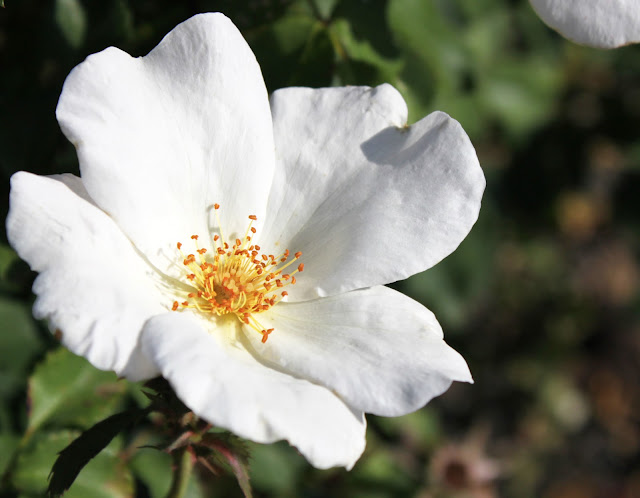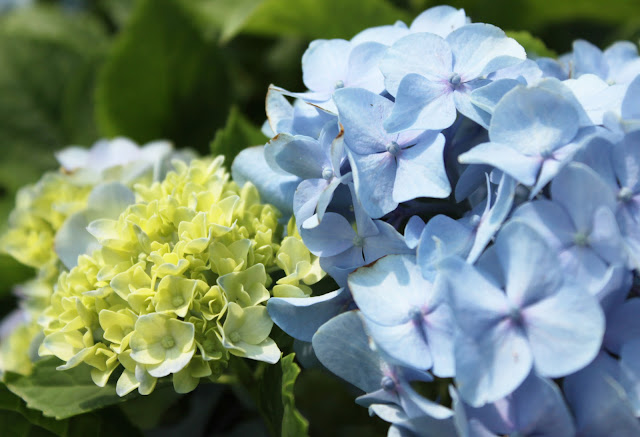Have you heard of Rose Rosette Disease?
Hello fellow garden enthusiasts!
Let’s talk today about a disease that’s been getting some press lately: Rose Rosette Disease.
Despite their reputation as being the wonder plant of the flowering shrub world, Knock out and Drift roses are not resistant to disease, and their susceptibility to Rose Rosette Disease has made them the topic of conversation lately. Rose Rosette Disease is by no means an epidemic but it’s always good to be aware of the challenges that may make their way to your garden!
Most gardeners know that disease is a fact of nature- it’s in the soil, it’s carried by insects, and in some way or other, it’s inevitable. Knowing that, savvy gardeners try to follow sound cultural practices, employ disease control methods, and brush up on the signs and symptoms of diseases so that when disease does occur, they’re ready.
So, as a smart gardener, what do you need to know about Rose Rosette Disease? Let’s cover:
-what it is
-how to identify it
-how to prevent it
-and what to do if your roses have it
What is Rose Rosette Disease:
According to a report published by Virginia Tech, Rose Rosette Disease is a virus that can affect any type of rose here in the United States. It is spread by mites and can ultimately be lethal to the infected plant.
How do you Identify Rose Rosette Disease?
There are a handful of symptoms to look for when diagnosing this disease, though not all instances of the disease will display the same characteristics.
One common symptom is red, irregular new growth. This can be a confusing symptom, though, because Knock out rose growth is usually reddish- it’s one of the beautiful features of knock out roses!
To minimize confusion, let’s compare photos of healthy and infected new growth to pinpoint what to look for. In the picture on the left below, you can see the healthy, reddish shoots of an uninfected Knock Out rose. The growth is naturally spaced and sturdy and the leaves are filling out into their mature structure.
In the picture below on the right (from www.ohio.com) you can see the thick, red growth of a rose infected with Rose Rosette Disease. This effect is often referred to as ‘witches broom’ and is a good indicator of a problem.
Another symptom to look out for is improperly developed flowers. On the left you’ll see a healthy knock out rose bloom. It has some discoloration along the edges of the petals, but that’s normal- it is out in the elements! On the whole, the whole it is healthy and fully-developed. In contrast, the picture on the right (from Today’s Garden Center) shows an infected rose whose blooms don’t quite fully mature. You can see that the inner petals never break the bud position and the outer petals are misshapen. In some cases, the buds never actually open.
So what can you do to prevent Rose Rosette Disease from reaching your roses?
Basically, the best way to prevent this lethal disease is to follow good horticultural practices:
1. Proper Spacing: when you plant your roses, make sure that you are spacing them 4-5′ apart so that when your plants are fully mature, their branches are not crossing. This disease is spread by mites that can simply mosey over to neighboring roses via branches and leaves that are too close together. Make it more difficult for these pesky carriers by spacing your plants properly!
2. Add variety to your plantings: While Knock out roses are a great way to add color and impact to your garden, resist the urge to plant banks of them. Any large grouping of the same plant species (also known as a monoculture) is increasingly susceptible to disease and roses are no exception. Mixing your roses among your other garden plants helps to decrease the chance of disease.
3. Prune and clean your roses annually: In late February, prune your roses to about 18″ canes and rake up the fallen leaves. This will help to remove any overwintering mites from the plant. Be sure to remove the debris, bag it, and trash it. Composting these clippings may only perpetuate any existing problem you may have in your garden!
4. Consider chemical control: if you have had trouble with mites before, consider employing a chemical control to reduce the mite population and prevent Rose Rosette Disease.
What should you do if you have an infected rose?
Unfortunately, there is nothing you can do to reverse the disease once it has infected a plant. The best thing to do is cut your loses and manage the diseased plant properly. Remove the plant completely, bag it and trash it. If its neighboring plants are roses as well, it’s a good idea to remove those plants as well.
Once the infected plants are out of your garden, it’s best not to plant roses back in that spot again to prevent the disease from reoccurring.
The good news is that only roses are vulnerable to Rose Rosette Disease, so if you do find it in your garden, your non-rose plants will be just fine!















